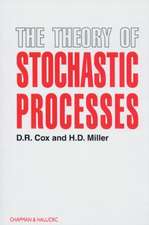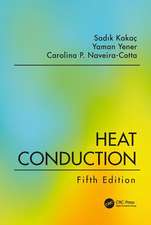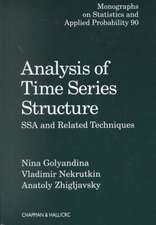Optimal Control Applied to Biological Models: Chapman & Hall/CRC Mathematical Biology Series
Autor Suzanne Lenhart, John T. Workmanen Limba Engleză Hardback – 7 mai 2007
Focusing on mathematical concepts, the book first examines the most basic problem for continuous time ordinary differential equations (ODEs) before discussing more complicated problems, such as variations of the initial conditions, imposed bounds on the control, multiple states and controls, linear dependence on the control, and free terminal time. In addition, the authors introduce the optimal control of discrete systems and of partial differential equations (PDEs).
Featuring a user-friendly interface, the book contains fourteen interactive sections of various applications, including immunology and epidemic disease models, management decisions in harvesting, and resource allocation models. It also develops the underlying numerical methods of the applications and includes the MATLAB® codes on which the applications are based.
Requiring only basic knowledge of multivariable calculus, simple ODEs, and mathematical models, this text shows how to adjust controls in biological systems in order to achieve proper outcomes.
Preț: 893.73 lei
Preț vechi: 1089.91 lei
-18% Nou
Puncte Express: 1341
Preț estimativ în valută:
171.06€ • 177.91$ • 143.35£
171.06€ • 177.91$ • 143.35£
Carte tipărită la comandă
Livrare economică 13-27 martie
Preluare comenzi: 021 569.72.76
Specificații
ISBN-13: 9781584886402
ISBN-10: 1584886404
Pagini: 274
Ilustrații: 42 b/w images and 691 equations
Dimensiuni: 156 x 234 x 21 mm
Greutate: 0.52 kg
Ediția:1
Editura: CRC Press
Colecția Chapman and Hall/CRC
Seria Chapman & Hall/CRC Mathematical Biology Series
ISBN-10: 1584886404
Pagini: 274
Ilustrații: 42 b/w images and 691 equations
Dimensiuni: 156 x 234 x 21 mm
Greutate: 0.52 kg
Ediția:1
Editura: CRC Press
Colecția Chapman and Hall/CRC
Seria Chapman & Hall/CRC Mathematical Biology Series
Public țintă
UndergraduateCuprins
Basic Optimal Control Problems. Existence and Other Solution Properties. State Conditions at the Final Time. Forward-Backward Sweep Method. Lab 1: Introductory Example. Lab 2: Mold and Fungicide. Lab 3: Bacteria. Bounded Controls. Lab 4: Bounded Case. Lab 5: Cancer. Lab 6: Fish Harvesting. Optimal Control of Several Variables. Lab 7: Epidemic Model. Lab 8: HIV Treatment. Lab 9: Bear Populations. Lab 10: Glucose Model. Linear Dependence on the Control. Lab 11: Timber Harvesting. Lab 12: Bioreactor. Free Terminal Time Problems. Adapted Forward-Backward Sweep. Lab 13: Predator-Prey Model. Discrete Time Models. Lab 14: Invasive Plant Species. Partial Differential Equation Models. Other Approaches and Extensions. References. Index.
Recenzii
". . . the present book has the merit of collecting and treating in a unitary and accessible manner a large number of relevant problems in mathematical biology; the text is well written, systematically presented, accurate most of the time and accessible to a fairly large audience; it could do a great service to the community of researchers in mathematical control theory . . ."
– Stefan Mirică, in Mathematical Reviews, 2008f
– Stefan Mirică, in Mathematical Reviews, 2008f
Notă biografică
Suzanne Lenhart, John T. Workman
Descriere
This text introduces the mathematical aspects of optimal control theory and provides insight into the application of this theory to biological models. It examines various problems, such as the continuous time ordinary differential equation, variations of the initial conditions, linear dependence on the control, and free terminal time. The book also features a range of biological applications, including immunology and epidemic disease models, management decisions in harvesting, and resource allocation models. With numerous examples and exercises, the text includes MATLAB codes throughout, enabling readers to modify the codes for their own applications.


























